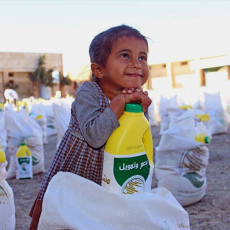While statistics for the most recent year are still being gathered, global development aid spending from Development Assistance Committee (DAC) countries in 2015 totalled than $131 billion according to the Organisation for Economic Cooperation and Development (OECD). This trend slightly arrests its previous upward trajectory, as 2014 saw a combined total of $137 billion from DAC countries, over $24 billion from non-DAC countries and an additional sum of $43.7 billion from multilateral donors such as the World Bank and the European Union. Although contributions from DAC countries reached record highs in 2015, just ten out of the 28 member countries reported an increase in outflows. Countries including Switzerland, Sweden, South Korea and Germany reported record-high contributions.

The OECD estimates that significant portions of donor country outflows went to assisting refugees living both outside and within their country borders. The OECD report noted that least developed countries (LDCs) such as Mozambique, the Central African Republic, Tanzania and Malawi remain heavily reliant on foreign aid, especially in the job creation, education and health sectors. Despite the slight downward trend in total spending in 2015, the OECD noted a 4% increase in bilateral (country-to-country) assistance and a 3% increase in core assistance to the LDCs, resulting in a 6.6% overall increase in ODA from DAC members.
Sub-Saharan Africa saw the greatest decrease in ODA outflows from DAC donors in 2015, reporting a $691 million drop from the previous year. Other recipients that saw significant decreases in ODA were Vietnam ($610 million reduction from 2014), Afghanistan ($439 million) and Mexico ($427 million). This was partly due to strategy shifts by larger donor organisations and a reduction of $6.5 billion in ODA from non-DAC donors in 2015. Countries that saw large increases in ODA volume include Ukraine ($1.1 billion in 2014 versus $302 million in 2014), the Democratic Republic of the Congo (up $244 in 2015) and Syria ($236 million increase in funding).

